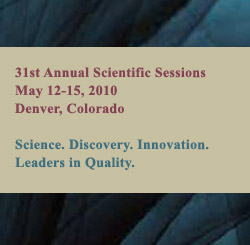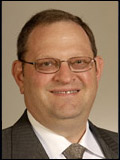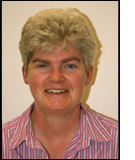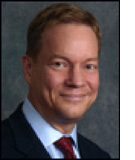      -->
-->
|
Meet the Experts Heart Rhythm Society Leadership Heart Rhythm Society leadership will be available for media interviews during Scientific Sessions. Please contact Megan Vibert or Cindy Rahman to schedule an interview. 
Richard L. Page, MD, FHRS Dr. Richard Page is Professor and Chair of the Department of Medicine at the University of Wisconsin School of Medicine and Public Health. Prior to moving to Wisconsin in December, 2009, he was the Robert A. Bruce Professor and Head of the Division of Cardiology at the University of Washington School of Medicine in Seattle. Previously, Dr. Page served as Director of Clinical Cardiac Electrophysiology at the University of Texas Southwestern Medical Center in Dallas. Dr. Page has been a member of the Heart Rhythm Society since 1990 and currently serves as President. Dr. Page’s areas of clinical expertise include atrial fibrillation, sudden cardiac death, and syncope. He is also known for his research in asymptomatic atrial fibrillation, drug therapy for atrial fibrillation, and automated external defibrillators. He has been widely published in leading journals such as the HeartRhythm Journal, New England Journal of Medicine, JAMA and the Annals of Internal Medicine. He serves on the editorial boards for the HeartRhythm Journal, American Heart Journal, American Journal of Cardiology, PACE, Journal of Cardiovascular Electrophysiology, and Circulation. Dr. Page has served as a standing member of the Circulatory System Devices Panel of the Medical Devices Advisory Committee at the FDA and has chairs committees for the American Heart Association and the American College of Cardiology Foundation. He is currently President of the Association of Professors of Cardiology. Dr. Page earned his medical degree from Duke University in Durham, NC, where he was a Sarnoff Fellow. After training in internal medicine at the Massachusetts General Hospital, Dr. Page trained in cardiology and clinical cardiac electrophysiology at Duke University Medical Center, where he was a Sarnoff Scholar. 
Douglas L. Packer, MD, FHRS Douglas L. Packer, MD, is a consultant in the Division of Cardiovascular Diseases, Department of Internal Medicine, at Mayo Clinic Rochester. He is the Director of the Heart Rhythm Services and Director of the Translational Electrophysiology Research Laboratory. Dr. Packer is recognized with the academic rank of Professor of Medicine, and is internationally known in cardiac electrophysiology. Dr. Packer is the 2009-2010 President Elect and 2010-2011 President of the Heart Rhythm Society. He is also active in several medical associations and has served on editorial boards for the HeartRhythm Journal, American Heart Journal, Journal of Cardiovascular Electrophysiology, and Journal of the American College of Cardiology. Furthermore, he has served on National Heart, Lung, and Blood Institute work groups on atrial fibrillation. His translational work focuses on the mechanisms and ablation of atrial fibrillation and other cardiac arrhythmias, and autologous fibroblast modulation of electrical impulse propagation in the heart. His clinical work investigates 4/5 dimensional integrated image-guided ablation, and the development of new energy sources for the modification of cardiac tissue. His work has been funded in part by private foundations, the American Heart Association, and the NIH. Dr. Packer holds two US patents and one European patent. Dr. Packer is an active teacher, mentor, lecturer, and writer or co-author of more than 175 publications. He has served on the executive committee of a number of NIH multicenter randomized clinical trials, Including the MUSTT, SCD-HeFT, and HAT Trials. Dr. Packer is also the International Principal Investigator of the NIH CABANA Pivotal Study and leads the consortium of centers directing the trial. Dr. Packer received a medical degree from the University of Utah and completed an internship, residency and fellowship at Duke University, where he was on staff before relocating to Mayo Clinic Rochester. His honors and awards include the Distinguished Service Award from Brigham Young University. 
Bruce L. Wilkoff, MD, FHRS, CCDS Dr. Bruce Wilkoff is the Director of Cardiac Pacing and Tachyarrhythmia Devices, and a staff cardiologist in the Department of Cardiovascular Medicine at the Cleveland Clinic. He is also Professor of Medicine at Cleveland Clinic Lerner College of Medicine at Case Western Reserve University. A member of the Heart Rhythm Society since 1985, Dr. Wilkoff has held leadership positions on numerous committees and currently serves as the Abstract Chair of the Scientific Sessions Program Committee. He also co-chairs the Strategic Priority Work Force Task Force, 2009 Revision of Lead Extraction Document Task Force and sits on the Executive and Finance Committees. Moreover, Dr. Wilkoff is on the Lead Performance Writing Group, Lead Performance Recommendations Task Force, AF 360º Task Force and is the former chair of the Health Policy Committee. Dr. Wilkoff specializes in the treatment of heart rhythm disorders, implantation of defibrillators and the computerized analysis of cardiac pacemakers and electrophysiologic studies. He is board-certified in internal medicine and cardiovascular disease, and he has served on the examination writing committee for Special Competency in Cardiac Pacing and Defibrillation since 1988. Dr. Wilkoff completed his undergraduate work at Northwestern University, earning a Bachelor of Science degree in biomedical engineering and received his medical degree from the Ohio State University College of Medicine in Columbus. He completed his clinical training in internal medicine at Case Western Reserve University and University Hospitals of Cleveland, followed by a fellowship in cardiology from University Hospitals and a fellowship in research from the Ohio State University Hospital and School of Veterinary Medicine. Dr. Wilkoff joined the Cleveland Clinic in 1987. 
Anne M. Gillis, MD, FHRS Dr. Anne Gillis is presently a Professor of Medicine at the University of Calgary and the Medical Director of the Cardiac Arrhythmia Program in Calgary. Dr. Gillis is currently serving as the 2nd Vice President of the Heart Rhythm Society and is also a member of the editorial boards for the HeartRhythm Journal and the Journal of Cardiovascular Electrophysiology, as well as Associate Editor of the journal Circulation. She is internationally recognized as a clinician scientist and has published many studies contributing to our understanding of mechanisms of cardiac arrhythmias and the development of new treatments for arrhythmias. Her current research interests focus on mechanisms of arrhythmogenesis in experimental models and the use of implantable device therapy for the diagnosis and treatment of cardiac arrhythmias. Dr. Gillis’s research has been supported by the Canadian Institutes for Health Research and the Heart and Stroke Foundation of Canada. Dr. Gillis earned a medical degree and gold medal from Dalhousie University in 1979. She interned at St Michael’s Hospital in Toronto, was a resident in internal medicine at the Victoria General Hospital in Halifax and completed training in cardiology and cardiac electrophysiology at Stanford University from 1982 to 1985. Following a year of research in Germany, she joined the Faculty of Medicine at the University of Calgary in 1986. 
N.A. Mark Estes III, MD, FHRS, CCDS Dr. N.A. Mark Estes III is Chief of the Cardiac Arrhythmia Center of the New England Medical Center Hospital in Boston, and Professor of Medicine at Tufts University School of Medicine. Dr. Estes currently holds several leadership positions with the Heart Rhythm Society including 2nd Past-President, Chairman of the Strategic Planning Task Force, Co-director of the Board Review Course in Cardiac Electrophysiology and Associate Editor of the HeartRhythm Journal. Author of over 350 publications including original reports, reviews, chapters and four books, Dr. Estes’ research interests are focused on prediction and prevention of sudden cardiac arrest and arrhythmias in athletes. He was one of the lead authors in the Defibrillators in Non-Ischemic Cardiomyopathy Treatment Evaluation Trail (DEFINITE), which found that patients with nonischemic cardiomyopathy who received ICD therapy had significantly reduced sudden death from arrhythmia with an associated trend toward reduction in all-cause mortality compared with standard medical therapy. Dr. Estes graduated with distinction from the University of Pennsylvania and the University of Cincinnati School of Medicine. After training in medicine at New England Deaconess Hospital and cardiology at Tufts-New England Medical Center, he completed his training in clinical cardiac electrophysiology at Massachusetts General Hospital. 
James H. Youngblood James H. Youngblood currently serves as Chief Executive Officer of the Heart Rhythm Society, the international resource for education and information on heart rhythm disorders. His role requires the strategic leadership of the organization, as well as oversight of the Society’s numerous initiatives and services, including membership and member services, educational programs and services, advocacy, strategic alliances, and organizational infrastructure issues. Prior to joining the Heart Rhythm Society, Mr. Youngblood was the Executive Vice President of Science Operations for the American Heart Association (AHA). Mr. Youngblood has served in numerous volunteer positions, including Chairman of the Board of Directors for the Professional Convention Management Association, and a Trustee of the PCMA Foundation Board. He was presented PCMA’s Distinguished Service Award. He has also served on various other meetings industry boards, including the Dallas Convention and Visitors Bureau, and the American Society of Association Executives Meetings and Expositions Council, and currently serves on the ASAE Foundation Board. Mr. Youngblood holds a B.A. in Economics/Sociology and an M.A. in Humanities from the University of Arkansas.
|